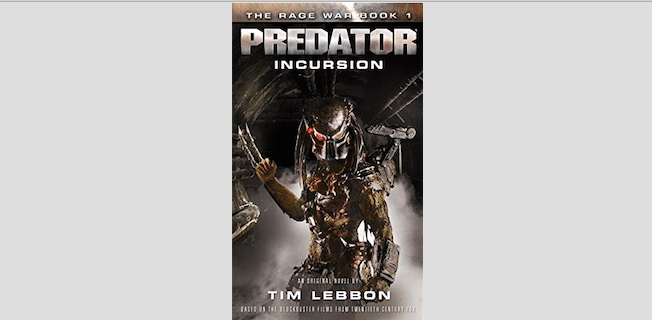Native Americans planted corn, beans, and squash together as the “three sisters”: the corn provided support for the beans, the beans helped add nitrogen to the soil, and the squash provided a ground cover. In Three Sisters, you bring this planting technique to your own backyard, competing to grow the best garden!
What Is Three Sisters?
Three Sisters is a roll-and-write game for 1 to 4 players, ages 8 and up, and takes about 45 minutes to play. It’s currently seeking funding on Kickstarter, with a pledge level of $29 (plus shipping) for a copy of the game. The gardening theme is family-friendly, though the combo-tastic nature of the game could make it a little intimidating for less experienced players.
Three Sisters was designed by Ben Pinchback and Matt Riddle and published by Motor City Gameworks, with illustrations by Marlies Barends and Beth Sobel and graphic design by Chris Kirkman.
New to Kickstarter? Check out our crowdfunding primer.
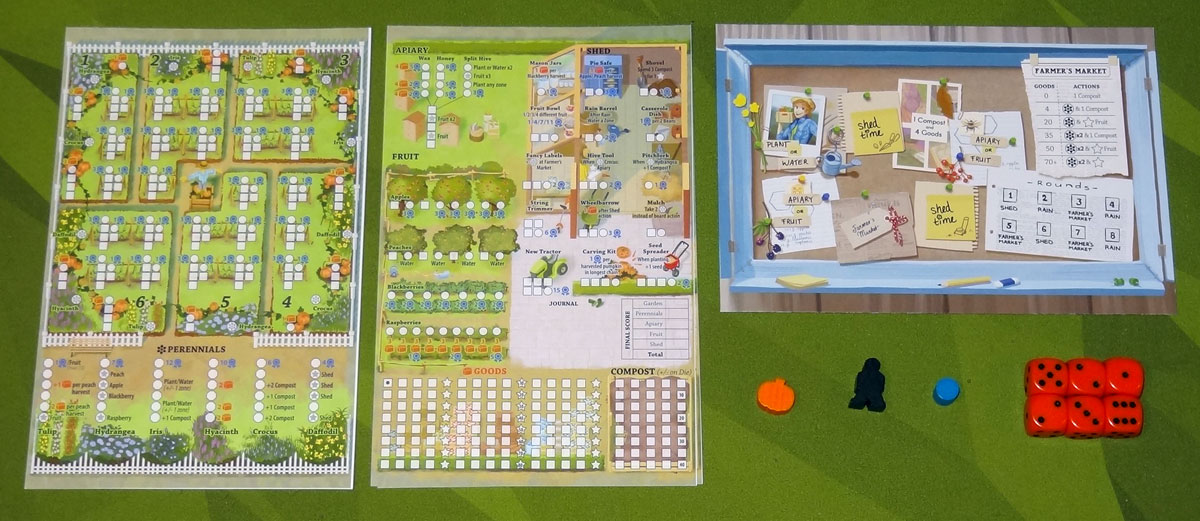
Three Sisters Components
Note: My review is based on a prototype copy, so it is subject to change and may not reflect final component quality. There are some stretch goals to add some other elements to the game if reached.
Here’s what comes in the box:
- 2 Scoresheet pads (50x sheets each)
- First Player marker
- Round marker
- Farmer Edith pawn
- Main board
- 6 dice
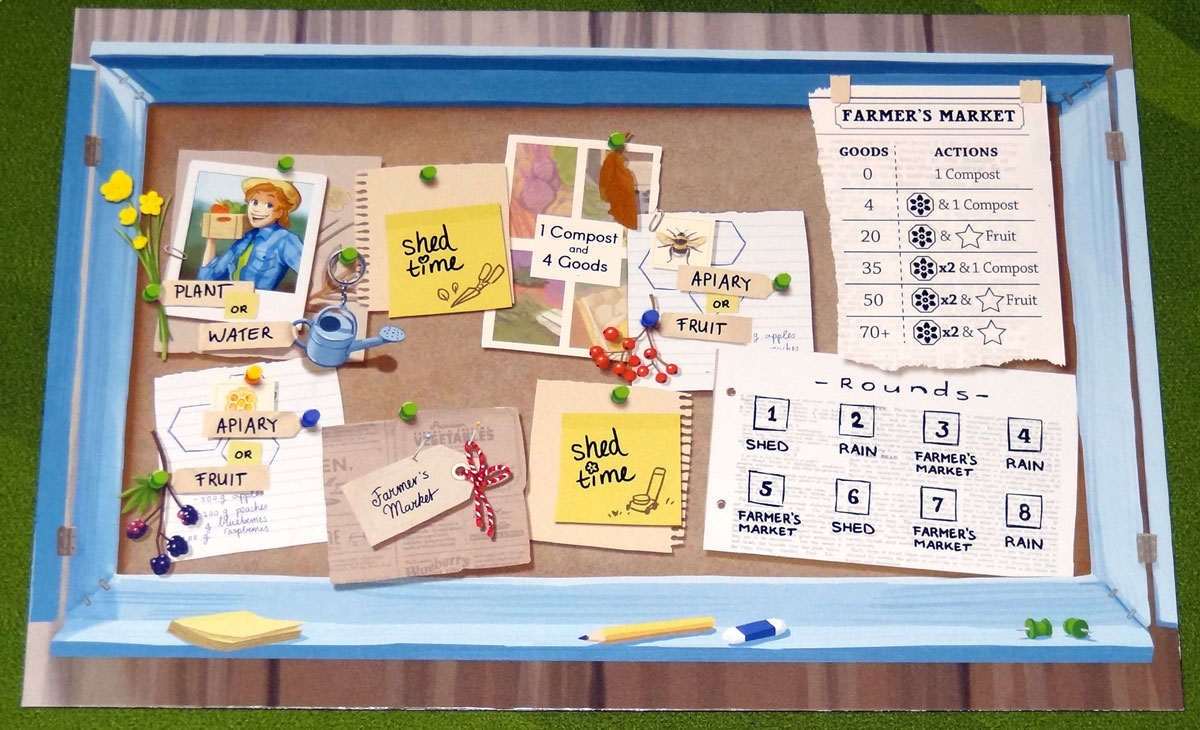
The main board is made to look like a bulletin board—the various action spaces are pinned notes and pictures, and there are also two newspaper clippings that serve as the round track and a reference for the Farmer’s Market action. It’s nicely done, with little details that fit the theme, while still being functional as a board. My only minor complaint is that as you place dice on the various spaces, it’s easy to cover up the words; once you know the game it’s not a big deal, but when you’re learning you probably want to set the dice next to the spaces instead.
The two scoresheets sit side-by-side to form a large backyard garden: there’s a primary fenced-in garden area for the vegetables, an apiary, a shed filled with tools, and more. Making it two separate scorepads allows them to cut the box size, so that’s a nice touch. The scoresheets also have little details in the illustration, though not too much because there are a LOT of checkboxes all over the sheets.
I’m not sure what the final pawns, markers, and dice will look like, though you can really use just about anything for those. The prototype had a pumpkin as the first player marker, and some generic meeples and tokens for the rest.
How to Play Three Sisters
You can download a draft of the rulebook here.
The Goal
The goal of the game is to score the most points by harvesting vegetables and fruit, growing flowers, and raising bees to make honey.
Setup
Place the main board in the center of the table, with Farmer Edith on the “Apiary or Fruit” space marked with a gold pushpin. Place the round marker on “Round 1.” Choose a first player and give them the first player marker. Give each player a pair of scoresheets. Use two more dice than the number of players, returning the rest to the box. Each player starts with 1 compost and no goods (marked at the bottom of the scoresheet).
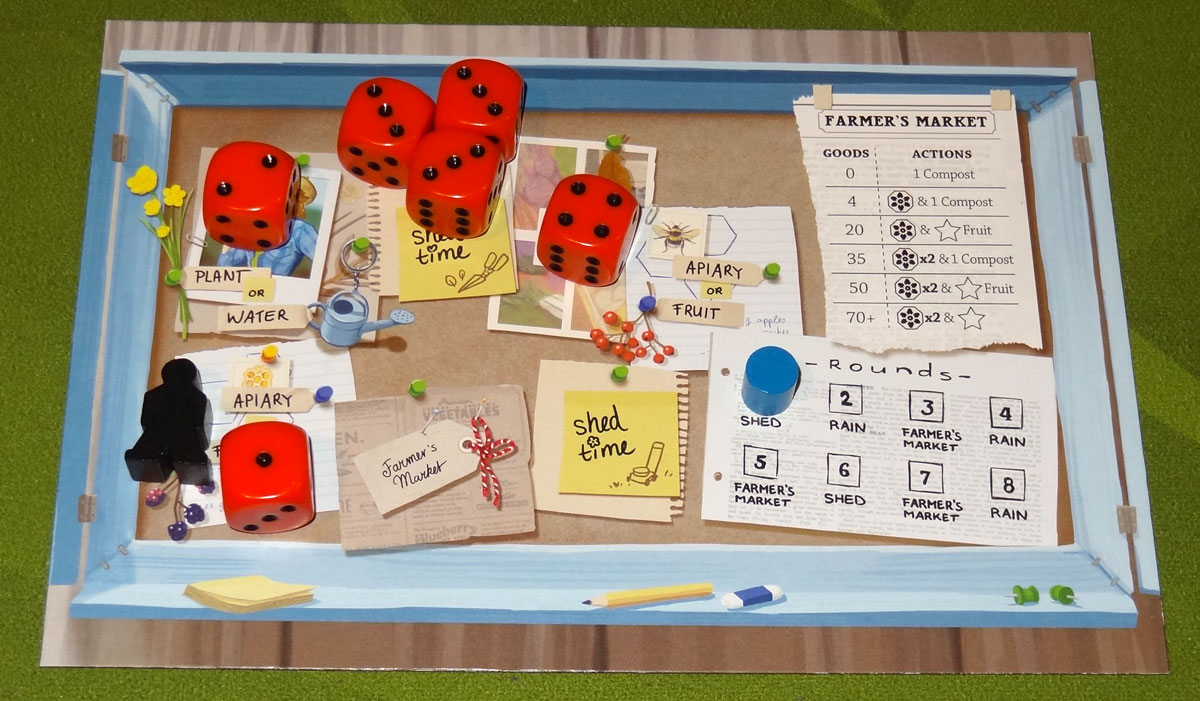
Gameplay
During each round, players will draft dice from the board and use them for various actions.
In general, sections are filled from bottom to top or left to right. Circles represent something being completed, so your corn isn’t harvested until you’ve checked off the circle above the three squares, and tools in the shed aren’t available to use until you’ve checked all the boxes and the circle at the end. Stars are bonus actions—some are general actions, and some specify where they must be used. Goods (represented by a small red crate) are marked in the goods section of your scoresheet, and blue ribbons are points, which are calculated at the end of the game.
The first player rolls all of the dice, and places them on the main board. Group the dice according to their values, and place the groups going clockwise around the rondel in increasing values, starting with the space where Farmer Edith is. Then move Farmer Edith clockwise to the next empty space.
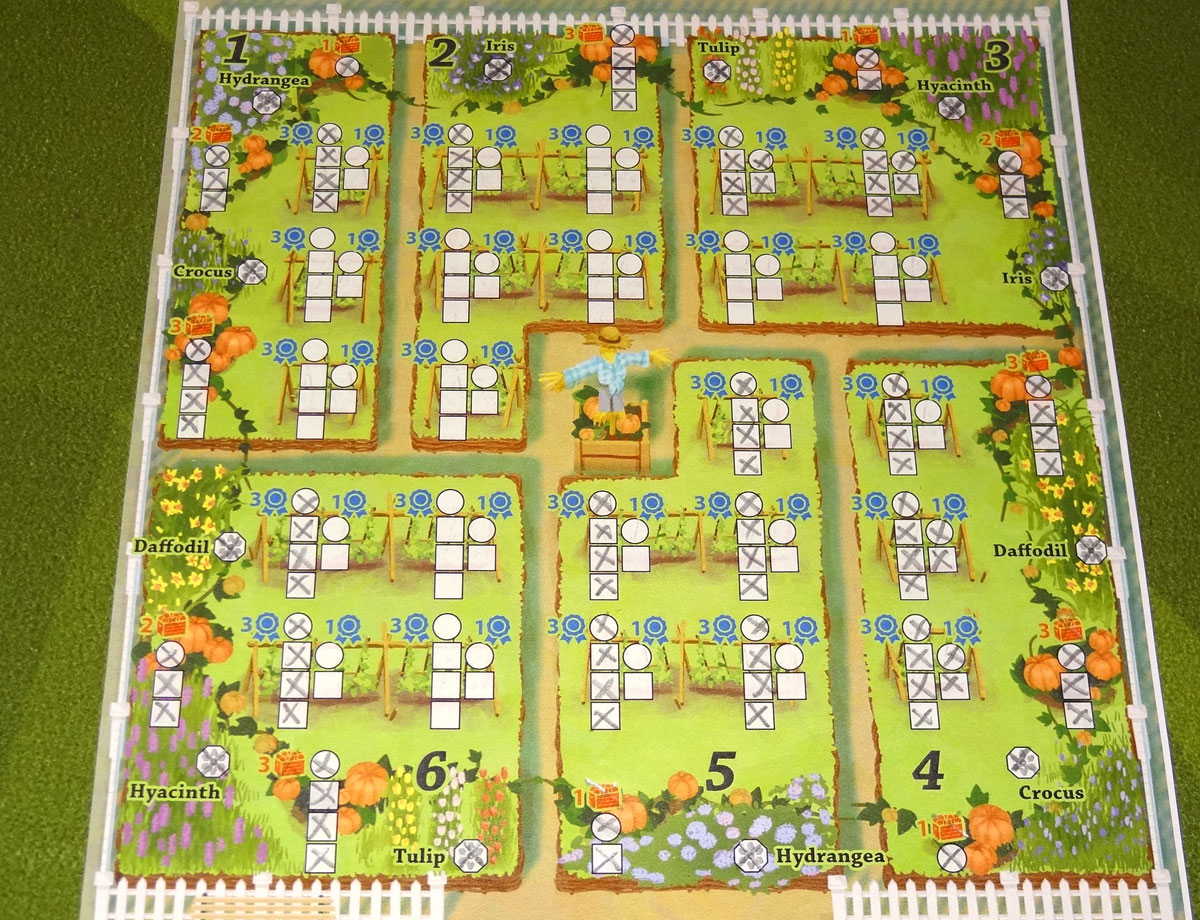
Starting with the first player, each player takes one die from the board. First, you plant or water in the garden zone matching the die you took: planting means you make Xs in two different plants that haven’t been started yet (plants are marked from bottom to top); watering means that you add an X to every plant in that zone that has already been started. The tall columns in the middle of the garden are corn, and the short columns next to them are beans. You cannot plant beans until there’s already an X in the corn stalk that lines up with the bean. Pumpkins grow around the outside edge of the garden, and may have 1 to 4 spaces each.
After planting or watering, you then take the action printed on the space from which you took the die:
- Plant or Water: Repeat the plant or water action in the same zone.
- Shed time: Make one X in any tool in your shed (left to right for each tool).
- 1 Compost and 4 Goods: Mark these at the bottom of your sheet.
- Apiary or Fruit: Mark one X in either the Apiary section (bottom to top) or the orchard (left to right).
- Farmer’s Market: Check how many goods you currently have and consult the chart. You’ll get some mix of compost, perennials actions (marking an X in the Perennials section from bottom to top), fruit actions, and bonus actions.
Once everyone has taken a die and done their actions, look at the 2 remaining dice on the board. Everyone gets the die with the lower value as if they had taken it from the board—both the plant or water action and the main board action.
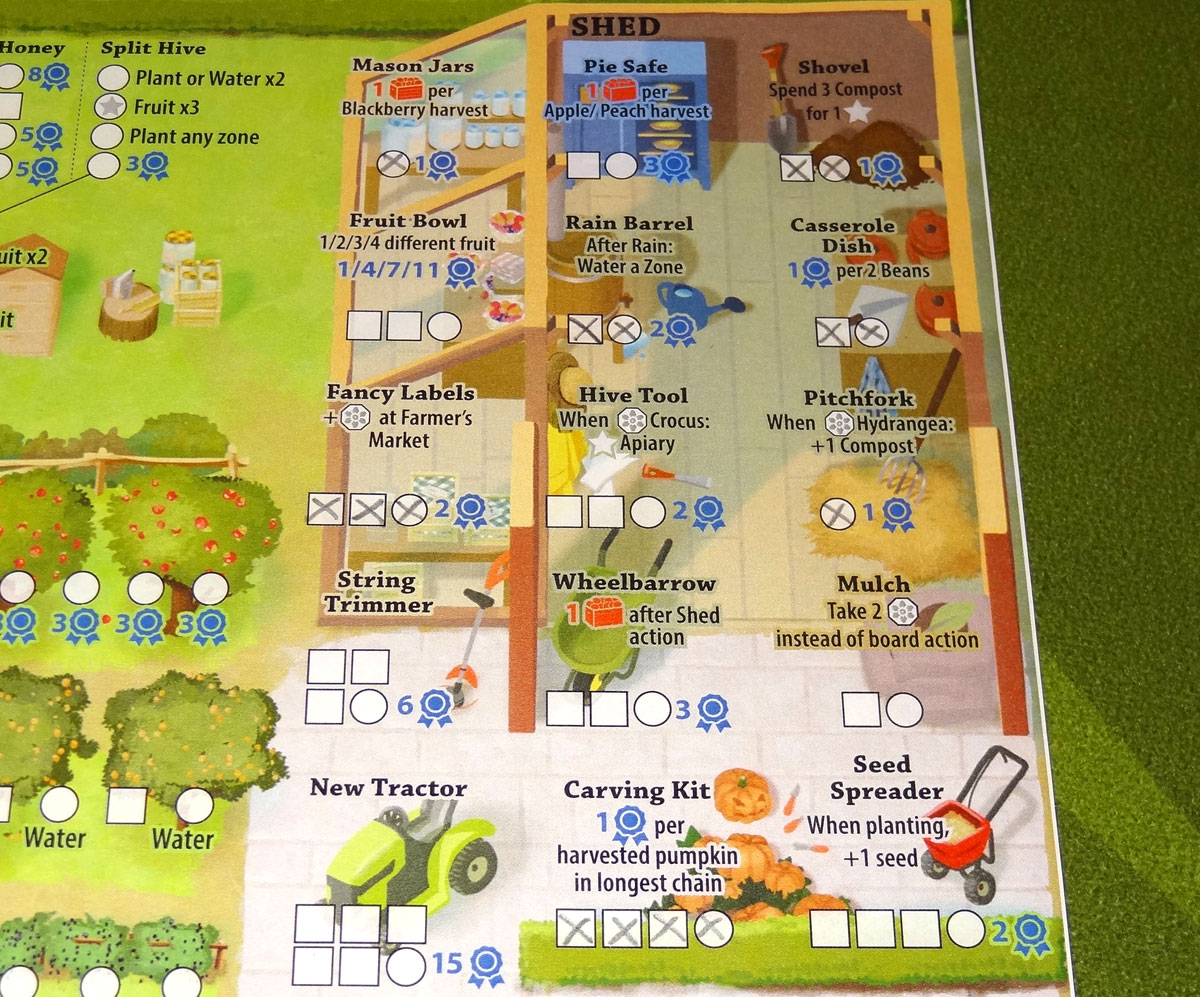
Then, there’s an event: everyone gets the end-of-round action printed on the board. Shed and Farmer’s Market are just like the regular board actions. “Rain” means that you water all six zones of your garden: any vegetable that has been started gets another X added to it.
Compost can be used to increase or decrease the value of the die that you claimed before you do your plant or water action, at a cost of 1 compost per pip. You may use as much compost per die as you have available, and you can wrap around from 1 to 6 or vice versa. (Mark compost with a dot when you gain it, and then X it out when you use it.)
Goods accumulate and are not spent, making your Farmer’s Market action more effective. Every 5 goods gets you a bonus action (indicated by the star) to spend immediately. It can be spent to make one X anywhere but the vegetable garden: perennials, apiary, fruit, or shed.
In between each pumpkin plant there’s one space with a flower. When both adjacent pumpkins have been harvested, you cross off that flower, and then make an X in the matching flower column in the perennials section. Many spaces in the perennials section give you bonuses, either immediate one-time bonuses or ongoing benefits, and reaching the top of a perennial will score you points at the end of the game.
At the end of the round, pass the first player marker clockwise, advance the round marker, and start again.
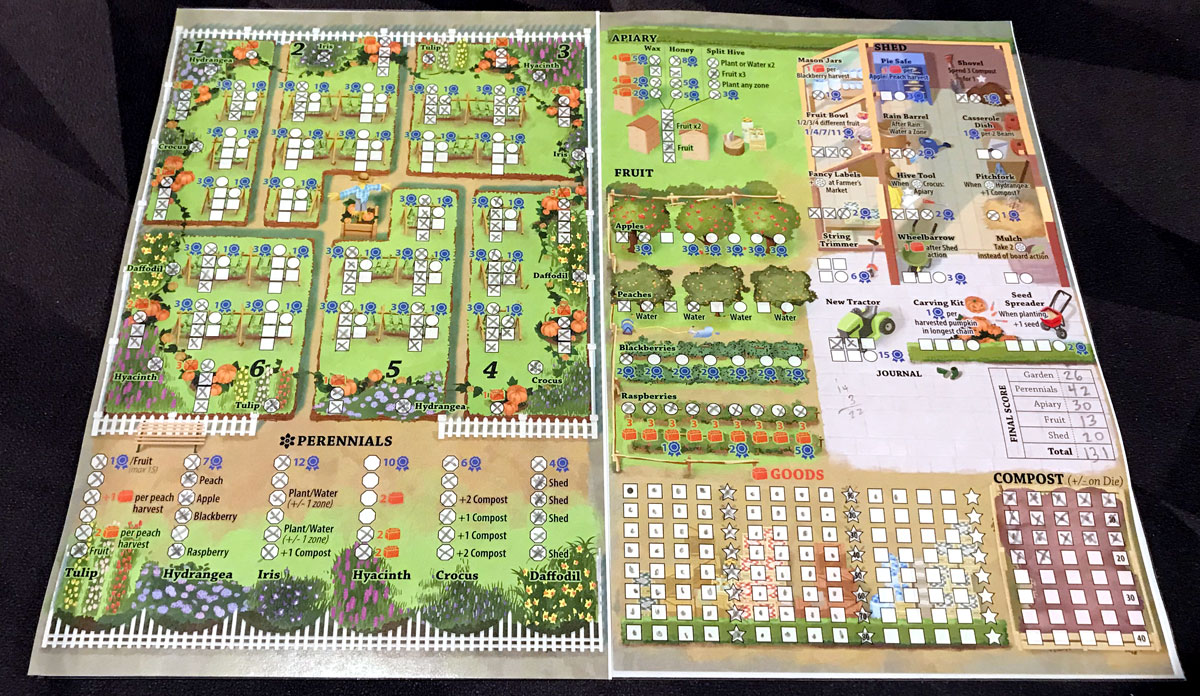
Game End
The game ends at the end of eight rounds. Players tally up all of their points—anything that has a blue ribbon on it—and the highest score wins, with ties going to the player with the most garden points, and then to the player who wins a pitchfork fight. (Hey, I didn’t write the rules.)
Solo Play
In the solo game, you use 4 dice (as in a 2-player game) and you play against Farmer Edith, who doesn’t use a scoresheet. After rolling and placing the dice as usual, you and Farmer Edith will each take two dice in alternating turns. For her first die, Farmer Edith always takes from the space with the gold pushpin, or else the closest die clockwise from that space. When players take their second die, they must always take the lower of the two dice left.
You take your actions as usual, but Farmer Edith crosses things off your scoresheet and makes them unavailable. She’s like that neighbor who comes over and borrows your shovel and doesn’t give it back, or maybe picks a flower or two from your garden without permission.
At the end of the game, you add up your score as usual, and compare it to the scoring chart to see how you did.
Why You Should Play Three Sisters
The roll-and-write genre has seen a boom over the past few years: sometimes you flip cards instead of rolling dice, sometimes you draw pictures, but the one thing they have in common is that you fill out some sort of sheet while you play. There are original designs, and there are roll-and-write games based on other board games. The majority of these games that I’ve seen tend to be a little lighter weight as far as the strategy and rules go, so they tend to have a reputation as casual games. But as the genre continues to pick up steam, there are designers showing that a roll-and-write can be just as brain-burny as a bits-and-pieces worker placement game.
Three Sisters is a good example: while the ruleset itself isn’t too complex, the game will have you agonizing over decisions because of the way that all the various pieces interact with each other. Do I plant pumpkins, because pumpkins give me goods, which give me bonus actions? Plus, completing pumpkins can give me flowers… so do I take the tulip that gives me more goods for harvesting peaches, or do I take the daffodil so I can get more tools in my shed? If I take an “apiary or fruit” action, I could get raspberries, which give me goods (again, for those sweet bonus actions), or I could go after my apiary, which takes a while to build up but could give me a lot of goods, a lot of points, or some bonus planting and watering.
And we haven’t even gotten to the tools in the shed! A seed spreader and rain barrel will help you plant and grow a lot of corn and beans in your garden, which score a lot of points. Or you could go the perennials route, getting fancy labels so you get extra perennials actions at the Farmer’s Market, and mulch so you can get perennials instead of the board action.
But don’t forget: goods and bonus actions are a lot of fun, but ultimately you want to make sure you’re scoring points. Maybe that shiny new tractor is just for show (after all, it doesn’t actually do anything), but it’s worth 15 points. I suppose it’s painted green, for your neighbor’s envy. Apples and blackberries don’t get you much in the way of bonus effects, but they add up to a high score if you harvest all of them.
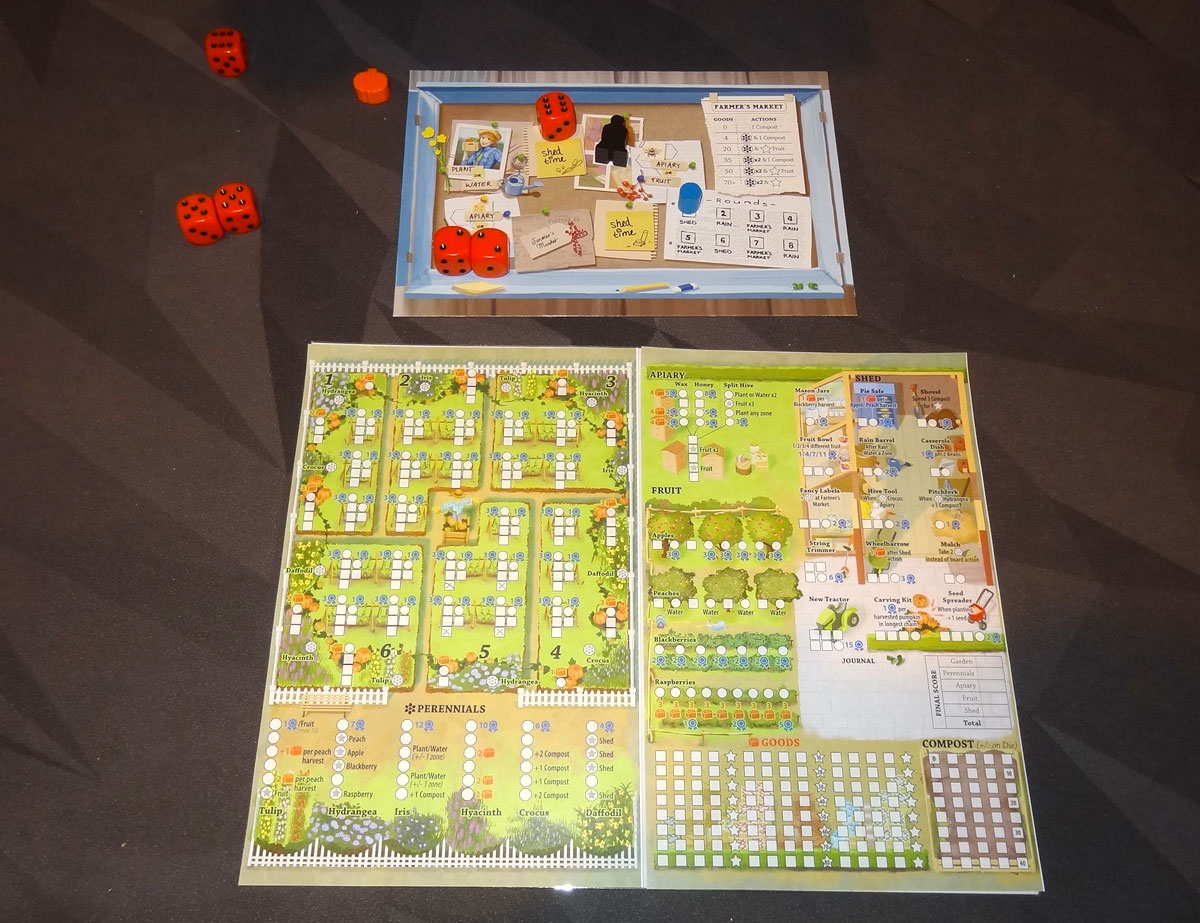
These are just some of the decisions you’ll be making as you play Three Sisters. I like that the die you choose from the board determines two things: the garden section you plant/water and the board action you get. Using compost, you can manipulate the value if you prefer a different garden section, but you’re limited initially by these randomized pairings. The fact that everyone gets the lower unused die also feeds into your decision: if the lowest die is on an action you’d like, you can risk it and take a different die, hoping that it will still be there later—or you take it, knowing that you might not like the leftover die as much. When you’re the last player in the round, you have a bit more control: you often get to decide which die is left for everyone.
One thing about the complexity is that it can be a little confusing keeping track of the bonus actions and chaining events. Maybe you water some pumpkins and you get to harvest them—that gives you goods, but also checks off a perennial between them. The goods give you a bonus action, but the perennial lets you check off something in your shed. Maybe that completes a tool in your shed that gives you a bonus when you do something else. So then you spend a bonus action on that, which gives you another bonus action… you see where this is going. Keeping track of what you’ve done already and what you have left is important, but tricky.

Most of my plays of Three Sisters have been over videoconferencing because of the pandemic, so I have the main board on camera but everyone’s scoresheets are off-screen. It works, though generally it’s harder to tell what other people are doing. That may be fine just to cut back on a little analysis paralysis—after all, if I don’t know what your garden looks like, I can just worry about which die I need and not what I’m leaving for you. But I do think that those with a competitive streak will really enjoy it even more playing in person, when you can scan the other gardens and take them into account when you’re choosing a die to take. Hate-drafting (taking something you know somebody else would want) was less of a factor in my remote plays, but will definitely be an option for in-person games.
I’ve really enjoyed playing Three Sisters. Although it can be a head-scratcher, that’s the sort of puzzle that I like. I’ve tried out different approaches, going after lots of vegetables versus completing my apiary versus aggressively growing perennials, and I haven’t figured out the best strategy yet. (Though I have found ways to improve my initial low scores!)
Ben Pinchback and Matt Riddle have designed a lot of games together, and this is their first title under their own publishing company, Motor City Gameworks. It’s a small box, but they’ve packed a lot into it. They have an earlier roll-and-write game, Fleet: The Dice Game (based on their Fleet card game) that I haven’t played myself. I’ve been told that it’s fairly complex for a roll-and-write, with lots of tough choices to make. One friend who has played both said: “Three Sisters does to Fleet what Fleet did to other roll-and-writes.” If you like your roll-and-writes quick and light, this particular form of gardening might not be the most relaxing for you. On the other hand, if you like the idea of roll-and-writes but wanted something a bit heftier, get out your gardening gloves and start planting!
For more information or to make a pledge, visit the Three Sisters Kickstarter landing page!
Click here to see all our tabletop game reviews.
![]() To subscribe to GeekDad’s tabletop gaming coverage, please copy this link and add it to your RSS reader.
To subscribe to GeekDad’s tabletop gaming coverage, please copy this link and add it to your RSS reader.
Disclosure: GeekDad received a prototype of this game for review purposes.




